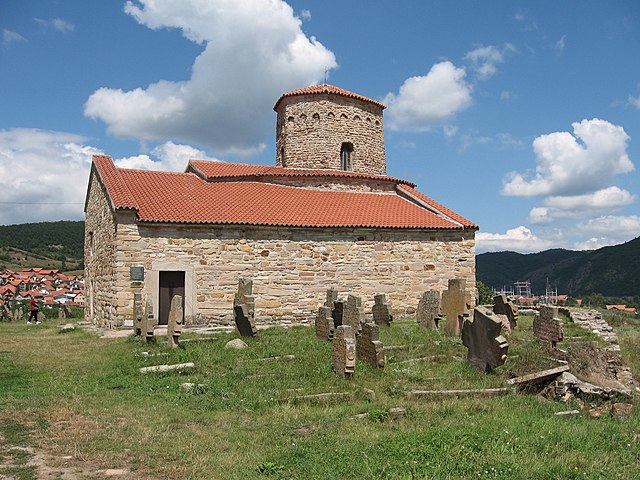Vlastimir was the Serbian prince from c. 830 until c. 851. Little is known of his reign. He held Serbia during the growing threat posed by the neighbouring, hitherto peaceful, First Bulgarian Empire, which had expanded significantly toward Serbia.
Vlastimir
Emperor Theophilos, who was the overlord of the Serbs, was prohibited to aid Vlastimir in a potential war with the Bulgarians as a peace treaty was in effect. Some historians maintain that he had an important part in the Bulgar-Serb war.
Principality of Serbia (early medieval)
The Principality of Serbia was one of the early medieval states of the Serbs, located in the western regions of Southeastern Europe. It existed from the 8th century up to c. 969–971 and was ruled by the Vlastimirović dynasty. Its first ruler known by name was Višeslav who started ruling around 780. While by that time, starting from the year 680–681, the Bulgarian state had taken the lands to the east. Vlastimir resisted and defeated the Bulgarian army in a three-year-war (839–842), and the two powers lived in peace for some decades. Vlastimir's three sons succeeded in ruling Serbia together, although not for long; Serbia became a key part in the power struggle between the Byzantines and Bulgarians, predominantly allied with the Byzantines, which also resulted in major dynastic wars for a period of three decades. The principality was annexed in 924 by Simeon I and subjected to Bulgarian rule until 933 when Serbian prince Časlav was established as ruler of the Serbian land, becoming the most powerful ruler of the Vlastimirović dynasty.

Emperor Basil I receiving delegations of Croats and Serbs.
Church of Saint Apostles Peter and Paul (UNESCO)




